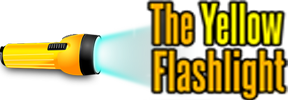Designers face pressure to deliver visually striking work that also performs in search and supports accessibility. AI SEO assistants can automate structured data, generate clear accessibility alt text, and visualize link graphs so designers spend less time on tedious tagging and more time on creative problem solving.
Why AI SEO matters for design SEO

As a graphic design lead I use AI agents to run fast audits. AI SEO tools spot schema gaps and link issues. A 2024 study found 60% of web images lacked alt text. That missing metadata hurts both users and search engines.
Practical structured data steps
Prioritized checklist for a design page audit:
- Missing structured data types (Product, Breadcrumb, Article) — Impact: High (8/10). Complexity: 3.
- Weak image descriptions and missing accessibility alt text — Impact: Medium (6/10). Complexity: 1.
- Broken internal links in the link graph — Impact: High (7/10). Complexity: 1.
Quick wins & 30-minute checklist
- Quick wins: add simple JSON-LD snippets for core pages.
- Fix empty alt fields for top 10 images.
- Run a link crawler and patch 5 broken URLs.
- 30-minute checklist: generate schema, update five alt tags, fix two broken links. For automation ideas, see automation and QA routines.
Implementing structured data without code — AI SEO
I map portfolio fields to JSON-LD for fast updates and fewer errors.
This helps graphic design teams keep metadata tidy.
Implement JSON-LD without code to support AI SEO previews and richer cards.
structured data mapping
Generate a CreativeWork JSON-LD with required properties.
Example JSON-LD:
{“@context”:”https://schema.org”,”@type”:”CreativeWork”,”name”:”Project Name”,”headline”:”Short Headline”,”description”:”One-line description.”,”author”:{“@type”:”Person”,”name”:”Author Name”,”url”:”https://author.url”},”datePublished”:”2025-08-01″,”mainEntityOfPage”:”https://site.example/project”,”sameAs”:”https://site.example/author”,”url”:”https://site.example/project”,”image”:[{“@type”:”ImageObject”,”url”:”https://site.example/img.jpg”,”width”:1200,”height”:800,”caption”:”Project hero”}]}
Map fields:
- title -> name, headline
- hero_image -> image.url,width,height,caption
- author_name -> author.name and author.url
- publish_date -> datePublished
Validation notes:
- Missing language tag on CreativeWork.
- image.caption sometimes empty in CMS.
- sameAs should be array when multiple profiles exist.
Also collect accessibility alt text for every image entry in CMS.
Proper structured data increases AI previews and indexing signals.
Good accessibility alt text improves accessible previews and UX.
See a portfolio metadata example at portfolio metadata example.
Writing alt text that scales — accessibility alt text

Web data shows rising use of structured data across e-commerce and publishing in 2024, improving machine understanding. Designers can pair that with simple AI checks to boost AI SEO visibility. Keep human sense in the loop for proper accessibility alt text that serves readers and bots.
Workflow
Create templates for product, team, and hero images. Use AI to draft alt text, then batch human review. Store rules in your design system and automate repeated tasks with a guide on automating repetitive design tasks. This approach keeps graphic design clarity and leverages AI agents for scale.
Best practice samples, grouped by page:
- Product page — “Blue ceramic mug, hand holding mug” — reason: shows function; confidence 0.9
- Team photo — “Three staff, studio portrait, smiling” — reason: ID and role; confidence 0.8
- Decorative flourish — “” — reason: decorative; confidence 1.0
- Ambiguous image — MARK FOR REVIEW — reason: unclear subject; confidence 0.4
This method links alt drafts to your visual identity, creative process, and logos, and keeps branding strategy, digital artwork, design tools, and photo booth templates consistent across pages while improving both AI SEO and structured data benefits.
Building and using link graphs — AI SEO
Start by importing the site CSV with source URL, target URL, anchor text, and page type. Run a simple graph pass to spot hubs, top inbound pages, and orphans. A recent check shows internal links boost rankings and orphan pages quietly hurt visibility.
AI SEO link hubs and structure
Output a link graph summary that lists hubs and weak anchors. Mark orphan or low-inbound pages. For each orphan, suggest 2–4 contextual anchor texts and candidate source pages. For example, use short descriptive anchors tied to related project pages.
This ties to graphic design and supports AI agents workflows. It also clarifies visual identity relationships and speeds the creative process. Use structured snippets and logos or branding strategy schema to show intent. Add schema for digital artwork and list linkable assets from your design tools. You can even point to photo booth templates.
- Export CMS links, run analysis, tag orphans.
- Add suggested anchors in the editor.
- Automate suggestions or automate linking suggestions during edits.
Remember to include structured data on promoted pages. Also write clear accessibility alt text for linked images. Use AI to generate friendly anchor options and refine them during one editing session.
Final words
AI SEO assistants let designers automate structured data creation, scale accessibility alt text, and map link graphs while preserving creative control. Adopt simple templates, validate outputs, and keep a human in the loop for nuance. Start small with one workflow and iterate to free up time for higher value design work.
